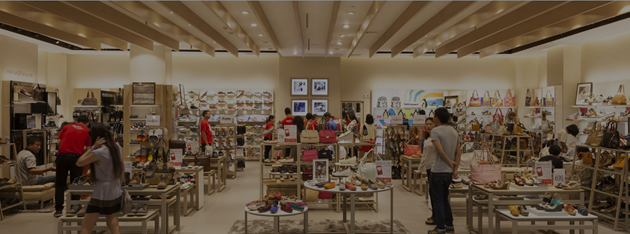Look at your shoes. If they bear the Baťa logo, then you should know that you are wearing a product with a history dating back to the Austro-Hungarian Empire of 1894. At that time the young cobbler Tomáš Baťa founded a shoemaking company in Zlín together with his sister and one of his brothers. In the following years the business spread across four continents, and today you can buy Baťa footwear in dozens of cities all around the world. Seems inspiring? Well, read on, that’s not even half of it.

Bata Shoes:
The young cobbler Tomáš Baťa was somewhat of a rebel. True, he came from a family that had been in the shoe business for centuries, but aged 14 he found himself a job with a company producing shoemaking machines. This was not much liked either by his father or the said company, which soon let him go, fearing the competition. Nonetheless, that did not stop him at all and with the help of his brother and sister he set up his own shoemaking business in 1894. To overcome the first serious setbacks, Tomáš Baťa decided to sew shoes called “baťovky“ from much cheaper canvas instead of leather.
After his stay in America Tomáš Baťa brought home new vigour for his entrepreneurial activities. He constantly needed a larger and larger workforce, but in the small town in the east of Moravia there was nowhere for them to live. Tomáš Baťa dealt with the problem by building houses for them and thus started to change the infrastructure of Zlín. Subsequently, the town experienced its most famous period – witnessing a development of functionalist buildings and the process of being slowly turned into an industrial town amidst its gardens. The Zlín functionalism enchanted the world-famous architect Le Corbusier, who described it as a “shining phenomenon” of the new world.
But back to our story of Baťa. Workers in his company received various benefits; however they had to expect great demands to be placed on them. Poor work was automatically punished by a cut in wages and such. Baťa employees were able to take part in further education programmes enabling the company to have staff capable of working abroad, but they had to adhere to the Baťa’s motto: “Don’t tell me it can’t be done – tell me you just don’t know how to do it.” You can learn more about his models and the history of footwear production in the Museum of Shoemaking in Zlín.
Baťa’s imprint in Moravia and across the world:
Baťa also thought about other important business aspects, such as pricing for example. He cleverly made use of the fact that we feel our purse can cope better if the price tags say 999 instead of 1000. Today, this pricing method is applied throughout the whole of the world. Tomáš Baťa did not underestimate advertising either, so he commissioned the building of a film studio in Zlín, which soon, apart from footwear commercials, started branching out into feature films. Thanks to this, today the city of Zlín regularly hosts a film festival.
Another contribution to the city of Zlín was Baťa Canal, which the company built after the tragic death of its founder. However, the waterway bears his name and today a beautiful cycle trail leads along it. The symbol of the Baťa Empire is the skyscraper in Zlín, which based on its house number is referred to as “twenty-one”. The construction of the building was commissioned by Jan Antonín Baťa, Tomáš Baťa’s half brother, following an American example and so in its time Baťa’s skyscraper was the second highest building in Europe.

Tomáš Baťa memorial:
Tomáš Baťa perished in a plane accident in 1932. However, over the 56 years of his life he managed to build a shoemaking empire, thanks to which the Baťa red logo now shines above thousands of shops in dozens of cities throughout the world. The memorial, authored by notable architect F. L. Gahura from Zlín, was built in his honour in the spirit of Zlín functionalism in 1933. The building has undergone challenging restoration in recent years, and today it again serves its purpose, to commemorate the life and works of the Czechoslovak industrialist. Its interior is dominated by a model of the Junkers F13 aircraft in which Tomáš Baťa died in 1932.

















